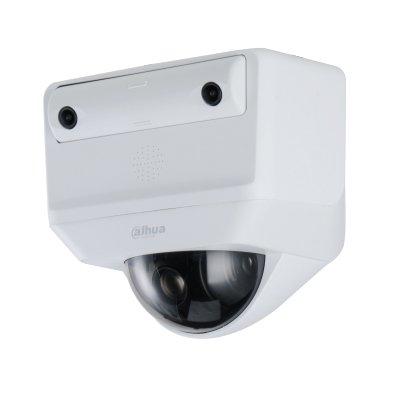What are the new developments in networking and connectivity for security?
Editor Introduction
Connectivity is literally the difference between products operating individually and those combined into a more powerful system. Many of the devices that connect today’s security products reflect mature technologies that have been proven over time. However, innovation is also driving the need for new approaches to connectivity and networking. We asked this week’s Expert Panel Roundtable: What are the new developments in networking and connectivity for security?
The World Bank predicts that by 2050, the current urban population will double in size. As cities grapple with the corresponding increase in foot traffic, motor vehicles, and cyclists, authorities will have to work harder to keep the uptick of pedestrians safe and transportation systems efficient. In large urban areas, network video surveillance technology and high-quality analytics not only provide valuable evidence in forensic investigations but can also help to improve mobility throughout cities city by providing both immediate and long-term insights to ensure comfortable and safe movement for people and vehicles. Network camera solutions can also detect accidents in real-time, identifying traffic incidents quickly and improving situational awareness for emergency responders. Regulators estimate that reducing 911 response times by just one minute could save as many as 10,000 lives each year, which means this technology provides real, tangible results in the community.
The growing prevalence of 5G will be one of the biggest development drivers for security in terms of connectivity for years to come. Many manufacturers are already developing solar panel-powered 5G devices, which can be rapidly deployed in a remote location with a simple 5G connection. This will be a game changer for security for remote sites or where hardwired connectivity is problematic due to 5G’s network capability, which provides broader bandwidth for video streaming. This removes much of the traditional barriers such as cabling and bandwidth constraints.
Security systems have evolved to be more connected than ever before. Different technologies integrate together seamlessly and effectively. Customers are looking for a layered security solution through a single point of interoperability. Security manufacturers can ensure that their product opens the door to integration opportunities with other industry leaders. For example, intercom systems that integrate with Session Initiation Platforms (SIP) allow end users to receive audio or video calls from any desk phone, mobile phone, or computer. Intercoms also integrate with video management systems and can be reviewed similarly to IP cameras. Overall, these integrations provide a better user experience through simplicity, readiness, and speed. The ability to easily adapt is the key, when addressing security issues promptly, and having a multi-layered approach makes that easier.
In the access control market, we are seeing a migration away from Wiegand and other proprietary communications protocols to OSDP developed by SIA. Wiegand has been around for decades, but it doesn’t meet today’s requirements. OSDP, which became an international standard in 2021, is much more secure and supports high-end AES-128 encryption. OSDP constantly monitors wiring to protect against attack threats and is bi-directional, meaning that readers and controllers communicate both ways to not only authorise access, but allow configuration and remote management to be carried out efficiently. In addition, total cost of ownership (TCO) is lower – you need less wires for OSDP communication. As a result, OSDP is being adopted quickly in many markets, particularly the United Kingdom (UK), Germany and the United States of America (USA). From an HID Global perspective, the good news is that our two main reader families – Signo and iCLASS SE – both support OSDP. Launched two years ago, Signo has OSDP built-in, with iCLASS SE technology easily upgradable using an additional module.
The cloud has been a game-changing development for security in the networking and connectivity space. The world of physical security is a great example here; with industry finally coming to the realisation that an ‘isolated’ patched network cannot adequately compare to a cloud-connected solution. Super flexibility, scalability, and ease of use alongside lighter weight and IoT networking technologies are going to drive adoption. We will see the functional breadth of cloud offerings increase leading to unified security platforms and category collapse in the industry. This is great for customers who are all looking for greater value from the systems they purchase.
The growing acceptance of Zero Trust as a legitimate security architecture is a significant improvement in the past decade for modern cyber security. Although initially maligned as a marketing buzzword, and still unfortunately misused in product announcements, zero trust now reflects table stakes to support the needs of hybrid and fully remote workforces. Network connections should no longer be implicitly trusted because of a user’s location behind a corporate firewall or the use of a company’s VPN. Rather, each transaction and connection from a user and their associated device should be inspected and validated to confirm that the access is appropriate. The ability of networking solutions to provide both real-time telemetry and controls, so that an automated and external policy engine can take enforcement actions is also a recent improvement, as networking equipment vendors historically tried to place their products and subscriptions at the centre of cyber security strategies. Today’s effective networking solutions integrate well with other solutions to provide one part of a holistic cyber security strategy.
Editor Summary
New developments in connectivity include 5G mobile networks, SIPs for intercoms, OSDP for access control, and even the cloud. As physical security continues to rely on multiple products and systems working together to achieve broader goals, secure and effective communication and networking will continue to be at the forefront of maximising innovation.
- Related companies
- Aiphone
- HID
- ONVIF
- Ava Security
- Ascent Solutions
- Related links
- Aiphone Access control software
- Aiphone Access control systems & kits
- HID Access control software
- Ava IP cameras
- Ava IP Dome cameras
- Proximity Access control systems & kits
- Indoor/Outdoor IP Dome cameras
- Standalone / Networked Access control systems & kits
- Network IP cameras
- Proximity Access control software
- High Level Interface Access control software
- Management Systems Upgrade Access control software
- Related categories
- Access control systems & kits
- Access control software
- IP cameras
- IP Dome cameras
- View all news from
- Aiphone
- HID
- ONVIF
- Ava Security
- Ascent Solutions
Expert commentary
- Mind the gap: Addressing cybersecurity at every phase of technology management
- When choosing an access solution, make total cost of ownership a key part of the calculation
- How Californian cities are improving surveillance and security - key developments from 2022 to 2024
- Healing through innovation: Securing healthcare in the cloud
Palm vein recognition
DownloadThe key to unlocking K12 school safety grants
DownloadSelecting the right network video recorder (NVR) for any vertical market
DownloadPhysical access control
DownloadCybersecurity for enterprise: The essential guide to protecting your business
DownloadVerkada Command Connector for Camera Integration & Cloud Management
Hikvision One-Stop SMB Solutions
Dahua X-spans Wizmind Network PTZ Camera





















